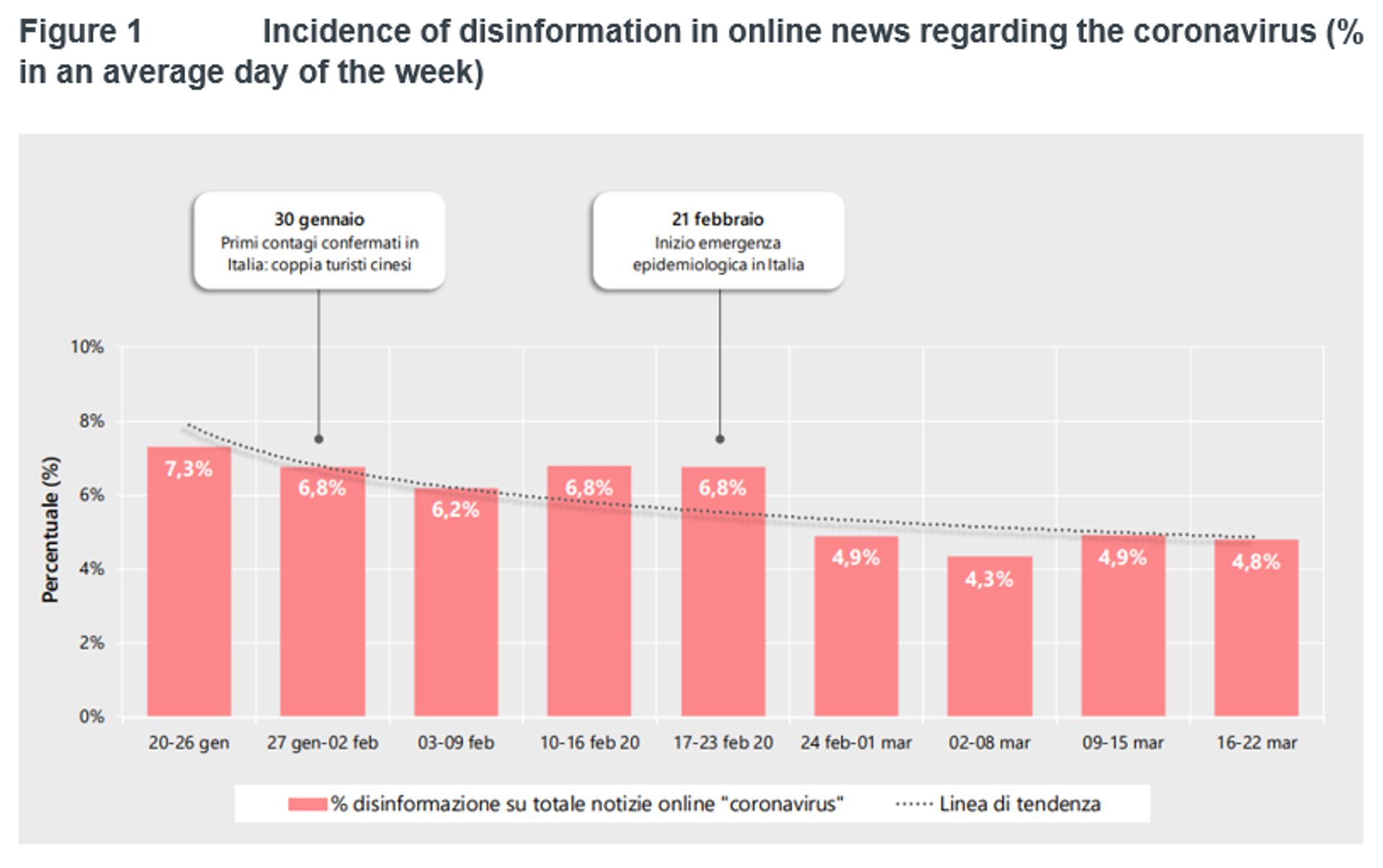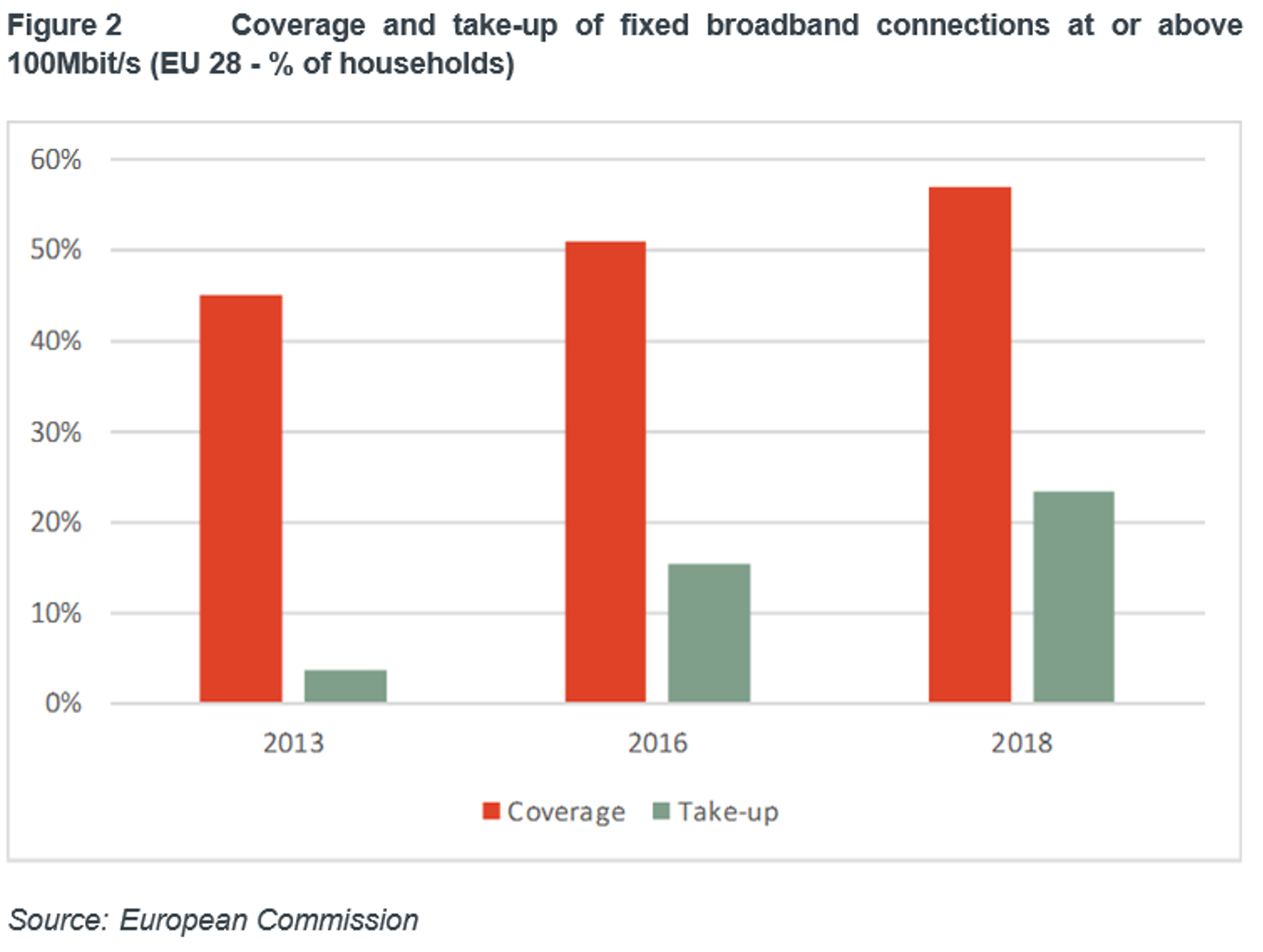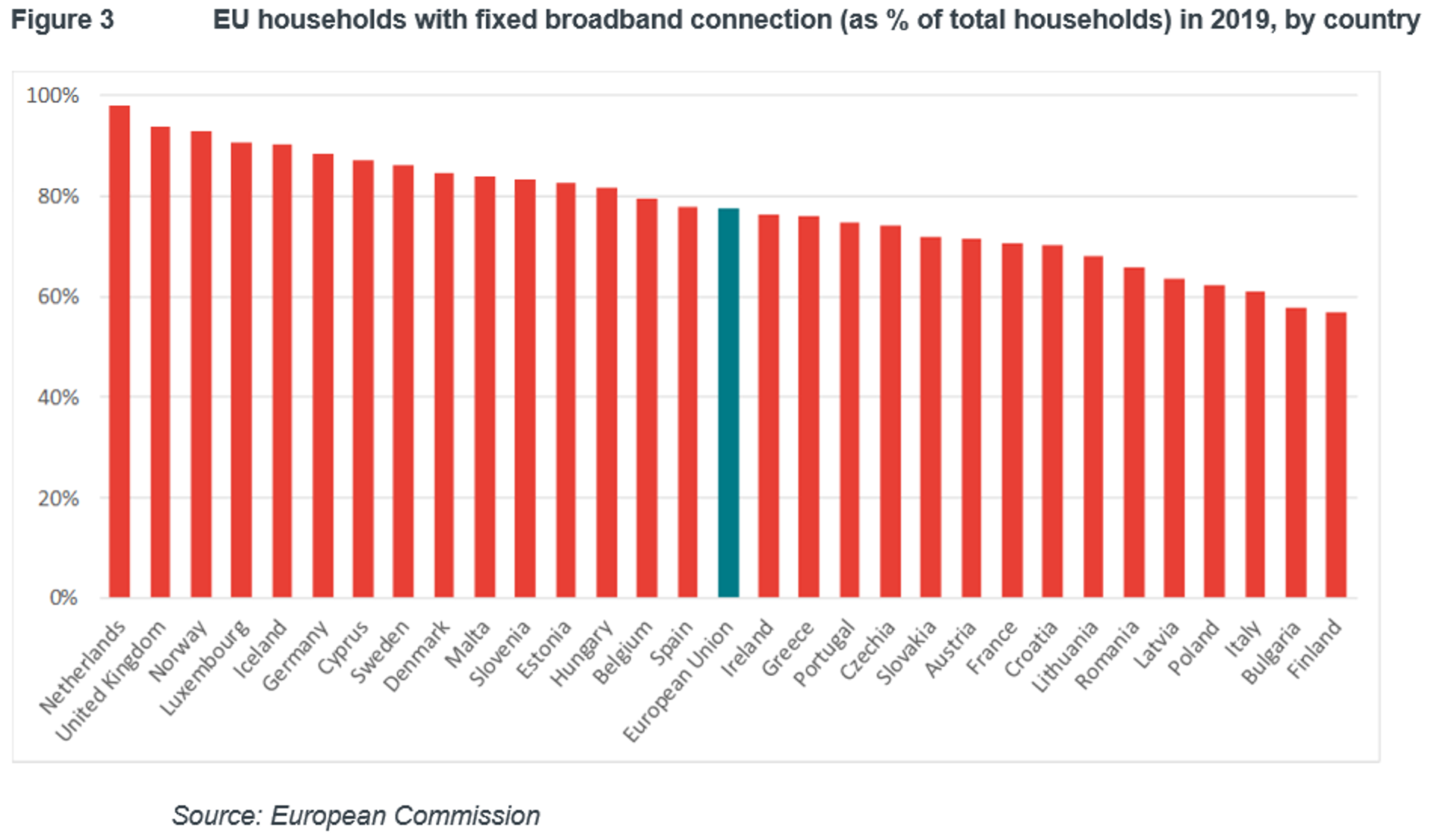Public authorities and governments have been at the forefront of the battle against the Covid-19 pandemic. The spread of the virus and consequent lockdown have hugely disrupted normal life, with many people losing their jobs. It has also resulted in a dramatic shift from face-to-face interactions to remote communication for public services such as education and health, as well as for social activities (in addition to remote working).
In light of the role played by telecommunication networks in mitigating the effects of the lockdown, regulators around the world have issued a flurry of temporary policies that are likely be removed once the current restrictions are relaxed. A key question is to what extent the lessons from the pandemic will affect future regulation. Given how the crisis has underscored the importance of telecoms for society as a whole, we argue that a reassessment of the current policy approach is timely.
Regulators focus on ensuring connectivity
During the Covid-19 emergency to date, telecoms regulators have mostly focused on trying to keep customers connected in the face of possible technical and financial constraints. They have implemented a series of measures to protect users, including protecting them from fake information.
Regulators have also sought to ensure that telecoms services remain available and resilient, by facilitating the allocation of spectrum resources and overseeing network performance.
These steps appear to be a reasonable temporary response to ensure that network operators and end users get through the crisis. We look at some examples in the sections below.
Measures to protect customers
Regulators have designed a number of measures to safeguard more vulnerable customer groups. They have also provided guidance to all users on the subject of accurate information.
Shielding vulnerable customers
Telecoms regulators have set out plans to aid financially more vulnerable customers in several ways. The main focus has been on enabling them to continue to use services through measures such as:
- Enforcing the obligation to ensure non-interruption of services in case of non-payment (Portugal, Romania, Spain, Perú);
- Not charging interest on overdue bills (Colombia, Portugal); or
- Granting more flexibility to terminate and change contracts (Portugal);
- Introducing no-cost tariffs for vulnerable customers on low incomes. Chile’s “Plan Solidario de Conectividad” offers a bundle of services to mobile customers belonging to the lowest 40% of earners. Mexico has launched a similar initiative.
Access to helpful (and truthful) information
Some regulators have provided additional guidance during the pandemic. The issues addressed include the use of technology for work; how to access truthful information during the emergency; and raising awareness of the risks related to fake news and cyber-attacks.
In Europe, for example, the French regulator has released an updated version of its guidance to teleworkers. In Albania and Portugal, regulators have warned end users about an increase in fraud and in cyber-attacks. In Italy, the regulator has issued a special edition of its reports on screening information and the sources of fake news in the times of Covid-19. In Latin America, Colombia’s regulator CRC has published recommendations of how to get proper information during the pandemic.

Note: Translation of the first text box: 30th January: first confirmed cases in Italy (two tourists from China); Translation of the second text box: 21st February: outbreak of the epidemic emergency in Italy. Legend: red bars = % of disinformation in news about coronavirus, dotted line = trend line.
Source: Agcom, Report on Online Disinformation, Special Issue on Coronavirus https://www.agcom.it/documents/10179/18199220/Allegato+14-4-2020/080f9ab1-df4d-481a-ad10-d4a89237bd01?version=1.0
Measures to ensure service availability
There was considerable concern early in the lockdown about the ability of networks to cope with the increase in overall traffic and the shift in usage from companies to households. To ensure that services remain available, regulators have facilitated access to spectrum resources and taken steps to underpin network resilience.
Access to spectrum
During the past few weeks, regulators in several countries have released additional spectrum rights to cater for increased demand over mobile networks. The aim is to avoid congestion and to ensure minimum access and service quality in all areas. ICASA, the South African regulator, issued a total of 17 temporary licences for additional spectrum. Comreg in Ireland and the FCC in the US have adopted similar measures. Frequencies made available by regulators have been in the 700MHz, 800MHz, 2300MHz, 2600MHz and 3500MHz bands. Alternative solutions have been considered, including allowing operators to access other licence holders’ spectrum (US). It is also important to stress that the additional spectrum rights have been assigned on a temporary basis to help operators cope with increasing pressure on their networks. These rights are being allocated at the request of mobile providers and not through a formal auction process. A symbolic nominal fee is set up front.
Network resilience
A key concern of service providers and of telecoms regulators during the pandemic is to ensure that fixed and mobile networks remain capable of meeting increased demand, without interruptions.
Currently, regulators are collecting data from internet service providers and other market players to monitor the status of networks and internet traffic congestion. Europe has suffered no major congestion problems, but traffic on fixed and mobile networks has surged during the crisis. For instance, in the first half of March, Spanish service providers reported a 40% increase in IP usage, while mobile voice and data traffic increased by 50% and 25% respectively. National regulators collect data as frequently as necessary to keep abreast of pressure on their networks.
In addition to its oversight role, the Italian regulator has encouraged operators to propose interim policy measures to boost network capacity, uphold service quality, safeguard access to emergency services, ensure internet connections to end users at fair prices, as well as promote users’ migration to fibre connections. Network resilience is even more critical in peak hours or in crowded towns and cities. The Spanish regulator, CNMC, had initially reported occasional problems with completing calls in very densely populated areas. Reflecting these concerns, all main fixed and mobile operators in Spain issued a joint letter asking consumers to take a number of measures so that network bandwidth is available for critical services and teleworking during peak times.
Among other steps to reduce the stress on networks, the European Commission has asked video-streaming platforms to take action to ease network congestion during the pandemic. Netflix has agreed to reduce bit rates across all streams in Europe for 30 days, while YouTube has committed to temporarily switch all traffic in the EU to Standard Definition by default. Amazon Prime, Facebook and Disney+ have joined the effort by limiting video-streaming quality on their platforms in Europe. Interestingly, all major streaming groups have responded to the Commission’s plea, showing a willingness to collaborate, while the Commission has taken on a new, increasingly important role as the European interlocutor for the tech giants during this crisis.

Temporary suspension or delay of some measures
Stakeholders, including regulators and operators, face operational constraints while under lockdown. In response, regulators have relaxed some measures and postponed other processes in order to ensure resources are appropriately deployed during this period. For instance, in the UK Ofcom has said it will revise its plan of work for 2020/21. It has suspended existing consultation deadlines and information requests have been put on hold. The deadline for the application of the Electronic Communications Code may also be delayed.
Whilst more spectrum has been made available to meet temporary demand for existing services, auctions for 5G mobile spectrum have been put on hold in several EU countries (Spain, France, Austria) and in the US.
What are the implications for policy?
Externalities are common in telecommunications. Chief among them are users’ ability to communicate with each other and the positive effects on productivity. However, these benefits have arguably played a limited role in the design and implementation of current regulatory frameworks. Perhaps this is because, at least in developed countries, basic communications are widespread and the positive impact on, say, productivity, whilst real, is intangible (so it may be seen as less real).
The Covid-19 crisis has changed this equation. It has served as a reminder of the positive side-effects of connectivity and shown powerfully how they profit the wider population. If I work from home, I am less likely to become infected and less likely to infect others, whether or not they have internet access. Thus, the benefits of access to a good internet connection extend to the whole of society. Moreover, the impact is observable within weeks, as the rate of infection decreases. In light of these externalities, the question is therefore whether existing policy is sufficient to promote deployment and take-up of good connectivity.
As part of its ambition to create what it calls the Gigabit society, the EU has set two principal goals for fixed networks:
- All major public providers to have access to 1 Gbps speed broadband;
- All households to have access to speeds of at least 100Mbps, which can be upgraded to 1Gbps.
However, these remain no more than aspirations. The EU still has a long way to go to meet its targets for both coverage and take-up, as the chart below shows.

Many could argue that today’s regulatory regime is already fit for the purpose of achieving these goals. Following the outbreak of the pandemic, there are signs of regulators increasing their efforts to improve Next Generation Access (NGA) adoption. Moreover, the current framework aims to incentivise investment, including in non-commercial areas, via subsidies, in order to narrow the digital divide. However, it is also true that we are still a long way from universal take-up of fixed broadband services and it is a long way off in some EU member states, risking a pronounced digital divide.

As with fixed services, people have made extensive use of both mobile voice and data services during the lockdown. Mobile is increasingly seen as an ally in the recovery from the pandemic, as governments look for ways to keep people safe and avoid new outbreaks. Mobile devices can provide invaluable data to help curb the disease, allow remote symptom checking and ensure compliance with travel restrictions. The EU’s Gigabit society plans also include a goal of uninterrupted 5G coverage in all urban areas, as well as on major roads and railways.
Acknowledging the positive externalities delivered by fixed and mobile connections during and after the pandemic, national regulators will need to make further efforts to stimulate deployment and demand for telecoms services, which raises some questions.
- For instance, how can a commitment to Gigabit coverage goals be met and funded? Should the universal service policy be revisited?
- Also, whilst roll-out is clearly important, people need to actually use the internet connections. So take-up is also critical. What is the right combination of supply-side policies (i.e. the promotion of deployment) and demand-side policies (i.e. the promotion of take-up)? How can policymakers ensure that customers are not being excluded from the broadband market and can afford high-quality connections?
- When it comes to the fixed-mobile “dichotomy”, what is the role of 5G in achieving policy objectives? Certainly, fixed connections have proven key in the pandemic, but does this mean 5G has no part to play?
The current framework was designed and applied in very different circumstances. In the wake of the pandemic, a decision not to reassess existing policy will be justified only if we assume there will be no similar crisis in the future or, alternatively, if we assume the externalities are not significant. As a result of this crisis, we expect there will be some, and perhaps permanent, changes in the demand of connectivity services and, potentially, in investors’ behaviour. A reassessment does not necessarily require policy intervention to change; it is about ensuring that intervention is appropriate to meet the challenges ahead.





